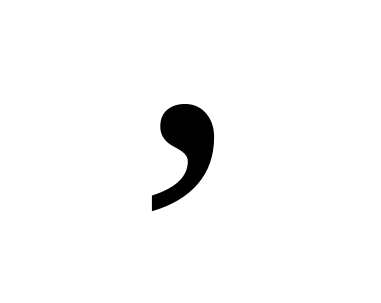Satire: Justice for the Oxford comma
The Oxford comma is the shunned punctuation mark of journalism.
The AP Stylebook, which many journalistic publications—including Granite Bay Today—follow, has a guideline discouraging the use of the Oxford comma, which is placed after the penultimate object in a list of three or more items.
For example, a sentence including an Oxford comma would read as, ‘Today I liked Instagram posts from my best friends, Taylor Swift, and Bill Nye.’
Without the comma, the same sentence could be easily misconstrued: ‘Today I liked Instagram posts from my best friends, Taylor Swift and Bill Nye.’
Look at me! I have friends in high places…or do I?
Sure, you could rewrite the sentence for clarity. Sure, you could look on Twitter and deliberate about whether you actually could include the comma per AP Style in this instance.
“We don’t ban Oxford commas! We say: If omitting a comma could lead to confusion or misinterpretation, then use the comma,” the @APStylebook account tweeted on Sept. 12, 2017.
Riiiiiight. I don’t intend to anger the journalism overlords, but I have to agree with English teachers on this one: the Oxford comma deserves to receive full assimilation into the newspaper world. It’s simply the best choice for the minimization of ambiguity.
Plus, then all of our non-Twitter-using journalist friends wouldn’t be out of the loop on AP Style updates like they usually are. According to a 2014 poll, 57% of Americans prefer using the Oxford comma. Thus, the majority of people would instinctively migrate towards using it without having to worry about what the AP Stylebook says about this punctuation.
Given that the spiral-bound edition of the AP Stylebook updates every two years, one can hope that, like skinny jeans, the Oxford comma will eventually come back in style—or should I say, back in AP Style?
All we can do in the meantime is ask, why have we forgotten this fantastic, amazing, and very useful punctuation mark?
Wait. Let me correct the above question before the AP Style police start a chase.
Why have we forgotten this fantastic, amazing and very useful punctuation mark?
It may seem rather dramatic to throw a big fuss about a comma, which is, after all, a few beady pixels on a screen or a smear of graphite between two words. The Oxford comma appears to be quite small and thus is deceptively unimportant. What difference does it make to use the comma or not?
Well, ask Oakhurst Dairy about the effects of the vagueness that the lack of an Oxford comma can generate. The company’s delivery drivers won a court case in which they claimed that, per an interpretation of Maine law, they would in fact be allowed overtime protections. The law would have been clear if it simply had included an Oxford comma in a list of occupational duties that are not granted overtime protections. Oakhurst Dairy was crying over much more than spilled milk when the court case concluded—they had to pay settlement funds of $5 million to the drivers.
If the inclusion of the Oxford comma were standard for AP Style, then there would be far fewer opportunities for misunderstandings caused by the punctuation of journalistic articles. Journalism students would stop complaining of nightmares about misuses of the Oxford comma. We could just embrace the comma rather than develop varying levels of fear or contempt for it.
Once you’ve used the Oxford comma once, you can never go back.
Unless you’re in journalism and you’re me. In that case, you are going to be going back a lot to re-proofread your articles because you dropped the Oxford comma in places it “didn’t belong.”
Thus, I make my case for the incorporation of the Oxford comma into AP Style. I wouldn’t have to restrain myself whenever I write lists in journalistic articles; for me, the Oxford comma is an impulse, a cultural icon, and a way of life.
See? I did it again.

Kate is a senior and Editor of the Opinion section. This is her second year on the Gazette staff.









